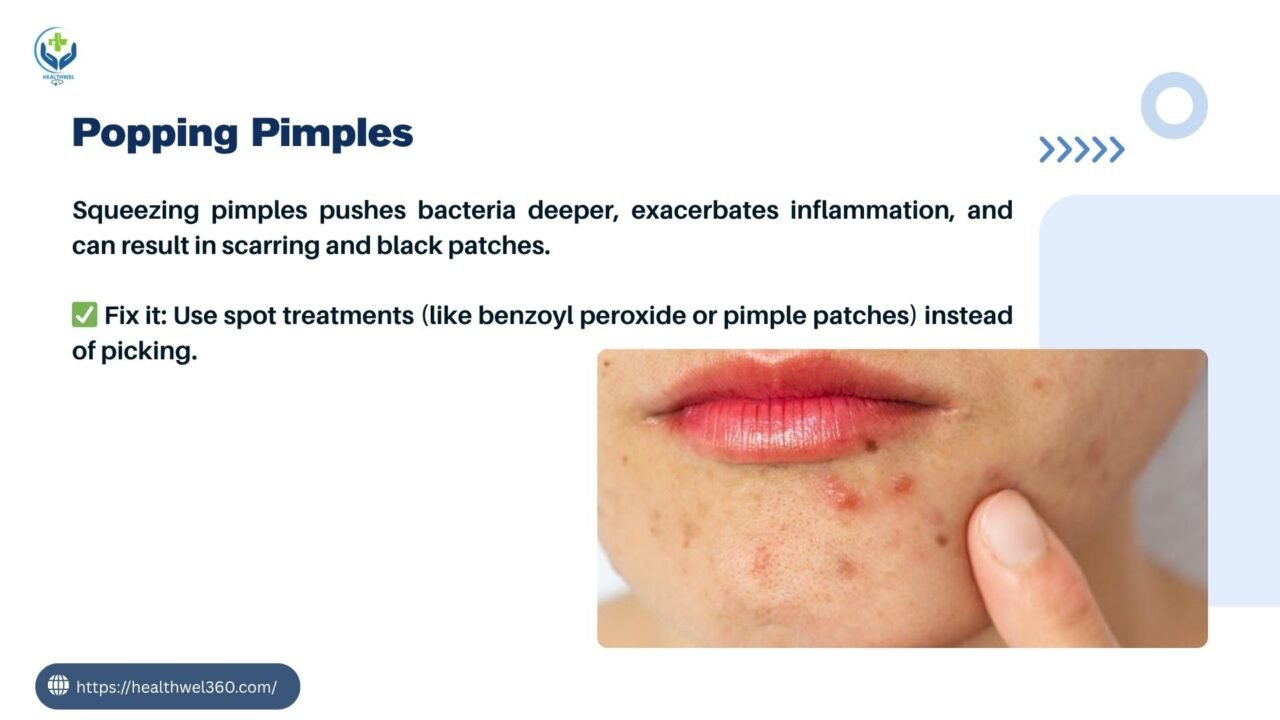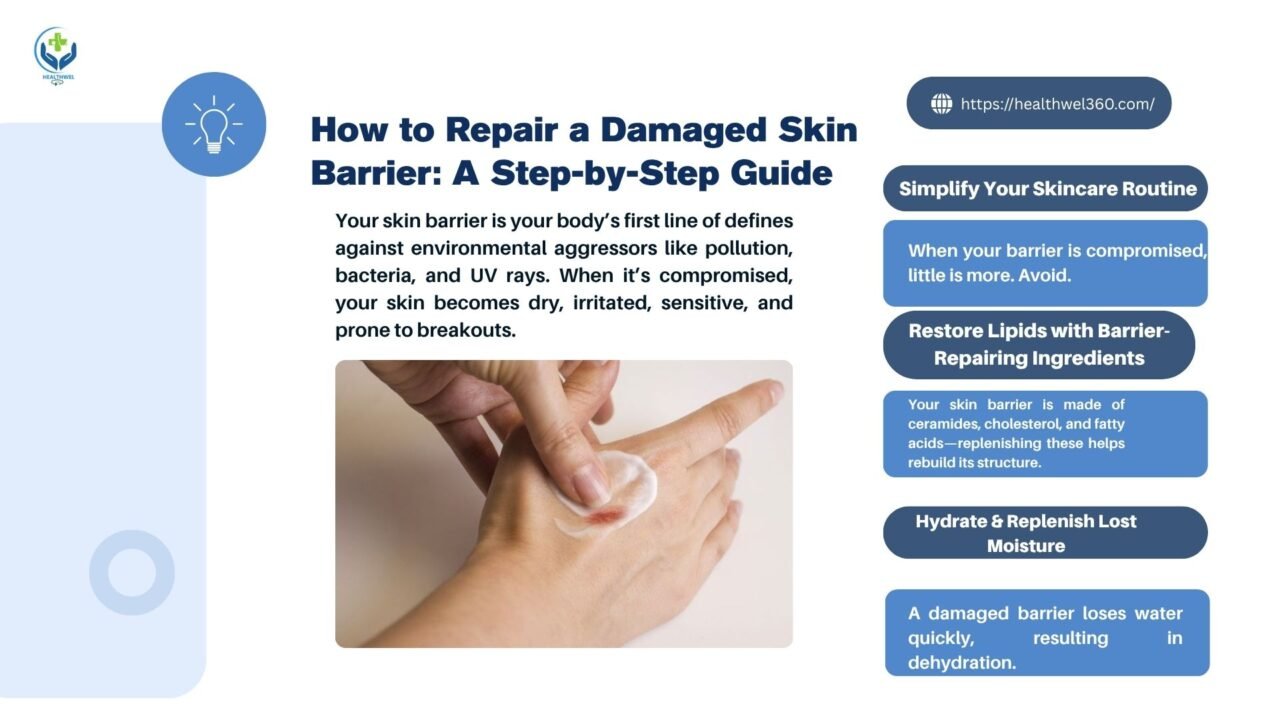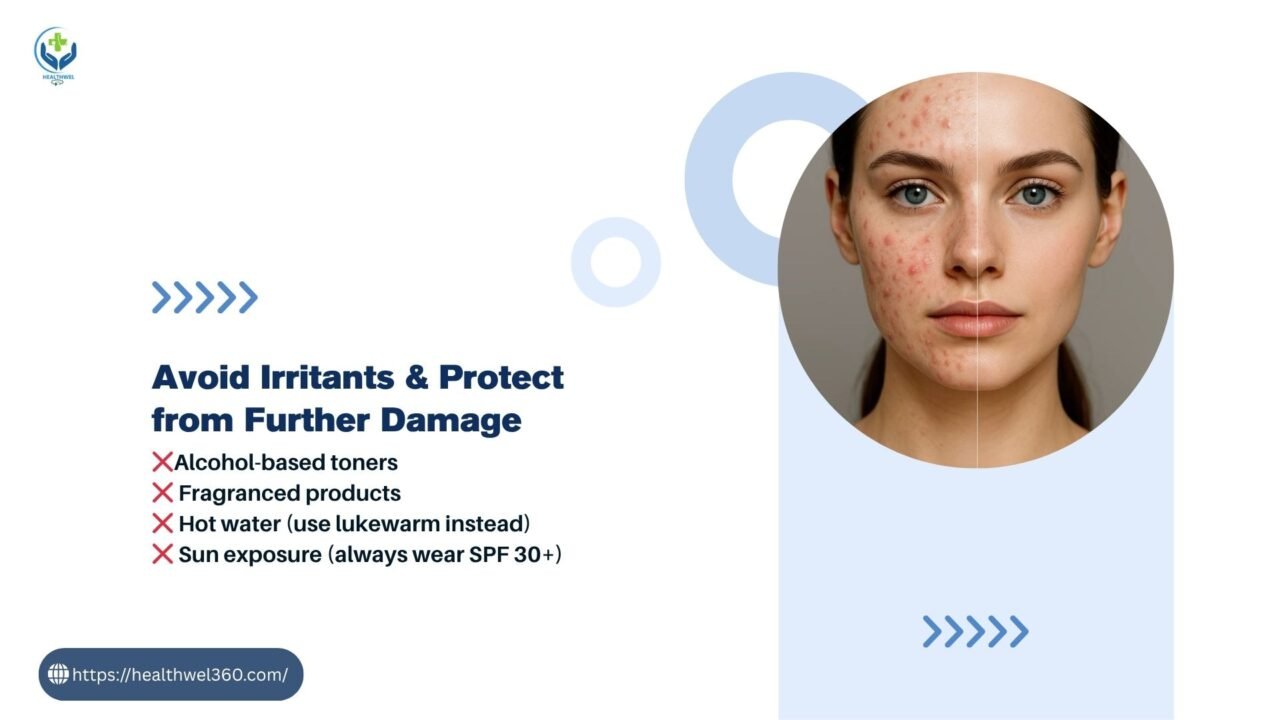10 Daily Habits Ruining Your Skin & How to Fix Them, Your skin is your body’s largest organ, and while you might be diligent about your skincare routine, some everyday habits could be causing unseen damage. From premature aging to breakouts and irritation, these common behaviours might be sabotaging your skin without you even realizing it.
Here are 10 surprising daily habits that harm your skin—and how to fix them!
- Skipping Sunscreen (Even on Cloudy Days)
Many people think sunscreen is only for sunny beach days, but UV rays penetrate clouds and windows, leading to premature wrinkles, dark spots, and even skin cancer.
✅ Fix it: Use a broad-spectrum SPF 30+ daily, even indoors. Reapply every 2 hours if outdoors.
- Over-Exfoliating
Scrubbing too hard or using harsh exfoliants (physical or chemical) too frequently can damage your skin’s natural barrier, resulting in redness, irritation, and breakouts.
✅ Fix it: Exfoliate 1-3 times per week max, and choose gentle acids (like lactic or mandelic) over abrasive scrubs.
- Sleeping with Makeup On
Leaving makeup on overnight clogs pores, traps dirt, and prevents skin from repairing itself, leading to dullness, acne, and irritation.
✅ Fix it: Always double-cleanse (oil-based cleanser first, then a gentle foaming wash) before bed.

- Touching Your Face Frequently
Your hands contain germs, dirt, and oils, which can clog pores and create outbreaks. Plus, tugging at your skin (like resting your chin on your hand) can lead to wrinkles over time.
✅ Fix it: Keep your hands away from your face, and wash them often.
- Using Hot Water to Wash Your Face
Hot showers or washing your face with steaming water strips natural oils, leading to dryness, irritation, and even broken capillaries.
✅ Fix it: Use lukewarm water and follow up with a hydrating moisturizer.
- Not Changing Your Pillowcase Often Enough
Dirty pillowcases collect oil, sweat, bacteria, and dead skin cells, which can clog pores and cause acne (often called “pillowcase acne”).
✅ Fix it: Wash or switch pillowcases at least once a week, or opt for silk or satin to reduce friction.
- Drinking Too Much Alcohol & Not Enough Water
Alcohol dehydrates your skin, making it look dull and aged, while not drinking enough water leads to dryness and slower healing.
✅ Fix it: Limit alcohol, drink at least 8 glasses of water daily, and use a hydrating serum (like hyaluronic acid).

- Popping Pimples
Squeezing pimples pushes bacteria deeper, exacerbates inflammation, and can result in scarring and black patches.
✅ Fix it: Use spot treatments (like benzoyl peroxide or pimple patches) instead of picking.
- Sleeping on Your Side or Stomach
“Sleep wrinkles” form from pressing your face into the pillow, which can deepen fine lines over time, especially around the eyes and mouth.
✅ Fix it: Train yourself to sleep on your back, or use a silk pillowcase to reduce friction.
- Stress & Lack of Sleep
Chronic stress increases cortisol, which breaks down collagen and triggers breakouts. Poor sleep also slows skin repair, leading to dullness and dark circles.
✅ Fix it: Practice stress management techniques such as meditation and exercise, and aim for 7-9 hours of sleep each night.

How to Repair a Damaged Skin Barrier: A Step-by-Step Guide
Your skin barrier is your body’s first line of defines against environmental aggressors like pollution, bacteria, and UV rays. When it’s compromised, your skin becomes dry, irritated, sensitive, and prone to breakouts.
But don’t worry—damage isn’t permanent! With the right care, you can restore your skin barrier and get back to healthy, glowing skin. Here’s a step-by-step guide to healing and strengthening your skin’s protective shield.
Signs of a Damaged Skin Barrier
Before diving into repair, check if your skin barrier is compromised:
✔ Redness, irritation, or inflammation
✔ Dry, flaky, or rough patches
✔ Increased sensitivity to products
✔ Breakouts or unusual acne flare-ups
✔ Tight, uncomfortable feeling after cleansing
If these seem familiar, it’s probable that your skin barrier requires some TLC.
Step 1: Simplify Your Skincare Routine
When your barrier is compromised, little is more. Avoid:
- Harsh cleansers (sulphates, fragrances)
- Over-exfoliation (physical/chemical scrubs)
- Heavy makeup or pore-clogging products
✅ What to do instead:
- Use a gentle, pH-balanced cleanser (look for ceramides or hydrating ingredients).
- Skip exfoliation until your skin recovers.
- Avoid new products that could cause irritation.
Step 2: Hydrate & Replenish Lost Moisture
A damaged barrier loses water quickly, resulting in dehydration.
✅ Hydration boosters:
- Hyaluronic Acid – Draws moisture into the skin.
- Glycerine – A humectant that locks in hydration.
- Aloe Vera – Soothes and reduces redness.
💡 Pro Tip: on get the most out of moisturising serums, apply them on damp skin.
Step 3: Restore Lipids with Barrier-Repairing Ingredients
Your skin barrier is made of ceramides, cholesterol, and fatty acids—replenishing these helps rebuild its structure.
✅ Key ingredients to look for:
- Ceramides (repair the “glue” between skin cells)
- Cholesterol (supports skin’s natural barrier)
- Fatty Acids (like squalane or omega-rich oils)
🌟 Product Picks:
- CeraVe Moisturizing Cream
- Dr. Jart+ Ceramide Cream
- The Ordinary Natural Moisturizing Factors
Step 4: Lock in Moisture with an Occlusive
Occlusives (like petrolatum or shea butter) create a protective seal to prevent moisture loss.
✅ Best options for sensitive skin:
- Vaseline (petroleum jelly) – Great for very dry patches.
- Shea Butter – Nourishing and anti-inflammatory.
- Zinc Oxide (in diaper rash creams) – Calms irritation.
💡 Nighttime Trick: Apply a thin layer of Vaseline or a sleeping mask over moisturizer to boost recovery.

Step 5: Avoid Irritants & Protect from Further Damage
While healing, steer clear of:
❌ Alcohol-based toners
❌ Fragranced products
❌ Hot water (use lukewarm instead)
❌ Sun exposure (always wear SPF 30+)
✅ Soothing Alternatives:
- Centola Asiatica (calms inflammation)
- Oatmeal (relieves itching and redness)
- Chamomile (anti-inflammatory)
Step 6: Be Patient & Consistent
Skin barrier repair takes time—usually 2-6 weeks, depending on severity.
Do’s:
✔ Stick to a simple routine.
✔ Stay hydrated (drink water + use humectants).
✔ Protect skin with SPF daily.
Don’ts:
✖ Don’t introduce actives (retinol, acids) too soon.
✖ Don’t pick at flaky skin (let it heal naturally).
Final Thoughts
Small daily habits add up over time—some help your skin glow, while others secretly damage it. By making a few simple changes, you can protect your skin’s health and maintain a radiant complexion for years to come.





Pingback: The Ultimate Guide to Women’s Dry Skin Causes Treatments
Pingback: Morning vs Night Skincare Routine Key Differences